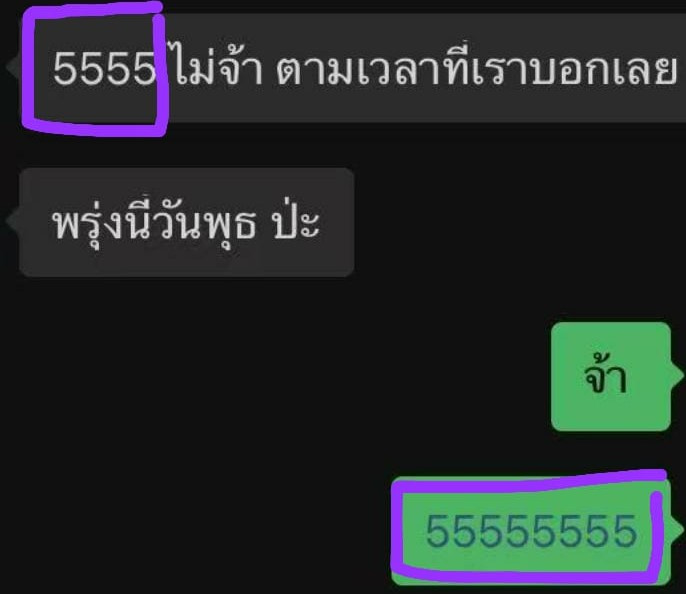There are three components you need to master in order to learn Thai properly – (1) The 5 Thai tones (2) 32 Thai vowels and (3) 44 Thai consonants. When I was new to Thailand, I got lost in Siam / สยาม. I pronounced Siam as the Singlish way of pronouncing “siam / make way”. However, Siam should actually be pronounced as “sai-yam”. Because I was unable to pronounce the word properly, nobody understood me and I ended up going round in circles. Point to note: If you cannot identify and pronounce the Thai tones, vowels and consonants properly, you will forever be handicapped when it comes to texting with a Thai 😨
1. Identifying and Pronouncing the Thai Tones
a. Mapping Thai tones to Chinese tones 🥳
Speaking another tonal language helps a great deal when it comes to mastering Thai tones. The Thai tones can be roughly mapped to the tones in the Chinese language. Both languages have five tones: low, high, rising, falling and flat/no tone for the Thai language vs tone 1, 2, 3, 4 and no tone for the Chinese language. I’ve put into a table below on how the tones can be roughly mapped to each other. Please note that this is not a 100% match – it is just a rough guide I made for myself when I was trying to get used to the Thai tones (as I have shared on my FAQs on learning Thai in Singapore).
| Thai Tones | Chinese Tones |
| No equivalent Thai tone | 1st tone |
| Rising tone (e.g. หัว huă) | 2nd tone (e.g. 华 huá) |
| Low tone (e.g. ดุ dù) | 3rd tone (e.g. 赌 dǔ) |
| Falling tone (e.g. ได้ dâi) | 4th tone (e.g. 带 dài) |
| Mid/flat tone (e.g. มา maa) | Neutral tone / 轻声 (e.g. 吗) |
| High tone (e.g. นับ náp) | No equivalent Chinese tone |
b. Listening to and identifying Thai tones on YouTube 🎵
When I took beginner Thai classes in NUS, we had listening quizzes on simply tone identification. Thai tones are extremely important because they make a huge difference and can mean totally different things if pronounced wrongly. For example, สวย (suăy, rising tone) means beautiful whereas ซวย (suay, mid/no tone) means bad luck. If you don’t pronounce the tone properly, you will end up cursing instead of complimenting the beautiful Thai girl that catches your eye! Another example is ใกล้ (klây, falling tone) which means far vs ไกล (klay, mid/no tone) which means near.
Here’s a song I really like – ไกล แค่ไหนคือ ใกล้ / How Near is Far by Getsunova. Let’s see if you can hear the difference in tone between ใกล้ (klây, falling tone) vs ไกล (klay, mid/no tone)!
Other method you can use to quickly get used to the 5 Thai Tones is to watch Thai dramas and get used to the way Thai people pronounce certain words.
2. Getting used to the Thai vowels
a. Long vs Short Vowels 🅰🅰 vs 🅰
Long and short vowels in the Thai language can again mean totally different things. For example, ฝึกหัด “feuk hat” – hat has a low tone and this means practice. Whereas หาด “haat” – haat also has a low tone and it means beach. Thai people will be confused and will have trouble understanding you if you don’t pronounce the short and long vowels properly.
Interested to learn the Thai Language? Here’s what you can explore!

Practice your Thai speaking skills and learn how to use Thai to express everyday small talk.

A serious Thai learner aiming to master Thai reading and writing? Start off by learning to text in Thai!

Go for regular Thai classes. Use your SkillsFuture credits to offset your Thai Language course fees!
3. Learning the Thai Consonants
a. “K / ก” vs “KH / ฃ or ค”
The “K / ก” ia a closer match to the “G/K” sound. In Singlish, you can use “Kor Kor / older brother” as a reference to map the “K / ก” sound. The “KH / ฃ or ค” is a closer match to the “C/K” sound. The pronunciation of the “KH / ฃ or ค” is similar to the K sound in “Kind”.
b. “B / บ” vs “BP / ป” vs “PH / ผ or พ”
| Thai sound | Example of Thai word | Mapped to English pronunciation |
| “B / บ” | บ้าน (baan, falling tone, means home) | “bee” |
| “P / ป” | ปาน (bpaan, no tone, means birthmark) | “pencil” |
| “PH / ผ or พ” | ผาน (phaan, no tone, means cross) | “pineapple” |
Interested to learn Thai reading and writing? You can check out my blog on “Should I learn to read and write Thai?”. If you have any further questions or need motivation to learn Thai, do reach out to me and I’ll be happy to advise you and help you along your Thai language learning journey!
Get help with learning to read, write and text in Thai today! 🥰
About the author – see the About page for more information
Joanne Tan is an aspiring polyglot and has so far mastered English, Chinese and Thai languages. She first started learning Thai in 2015 before staying in Bangkok for 5 months, and then continued studying Thai up to Advanced Levels at the National University of Singapore. In 2017, Joanne was awarded ‘Advanced Thai Proficiency’ by the Sirindhorn Thai Language Institute of Chulalongkorn University. Today, Joanne continues to teach her friends basic Thai speaking and helps her Thai friends actively promote Thai culture.
